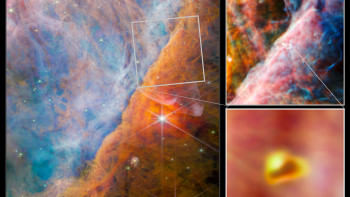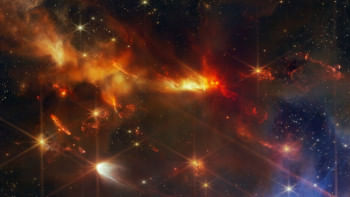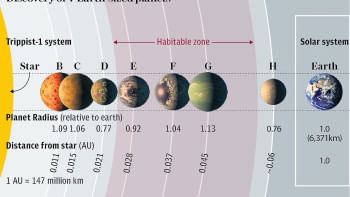Does the K2-18b exoplanet really have alien life, or is it merely an illusion?

For millennia, we thought that our solar system was the only planetary system in the universe. We even thought that it was home to the only planet in the cosmos where intelligent life evolved. This perspective changed in the early 1990s when astronomers began identifying planets that orbit stars beyond our Sun. To date, over 5,000 such planets, referred to as exoplanets, have been discovered.
Given the vast number of exoplanets, it is only natural to ponder: are we the only beings in the universe? Current scientific consensus suggests that it is highly unlikely we are alone. Researchers estimate that within our galaxy, the Milky Way, which contains approximately 100 billion stars, there may be hundreds of thousands of planets that could support extraterrestrial life.
In the quest to discover extraterrestrial life, astronomers have concentrated their research on red dwarf stars. The vast quantity of these stars—estimated to be at least 75 billion within the Milky Way—significantly enhances the likelihood of finding habitable planets orbiting some of them. While red dwarfs, which possess masses ranging from 0.08 to 0.60 times that of the Sun, are crucial targets in the search for alien life, they present challenges for observation due to their faintness, emitting only 0.05 percent of the Sun's luminosity. Nevertheless, they are relatively more luminous in the infrared part of the electromagnetic spectrum. This is where the recently launched James Webb Space Telescope (JWST) comes into play as it is specifically engineered to detect infrared light.
In a remarkable advancement that has stirred the scientific community, JWST has uncovered what could be the most compelling evidence of extraterrestrial life on a planet designated K2-18b, which orbits within the habitable zone of the red dwarf star K2-18. The habitable zone refers to the region around a star where conditions are suitable for the existence of liquid water, avoiding extremes of heat and cold that would render a planet inhospitable. Initially identified in 2015 by the Kepler satellite, this exoplanet has a radius approximately 2.6 times that of Earth and is 8.6 times more massive, making it roughly half the size of Neptune. It is situated 124 light-years from Earth and falls into the category of "sub-Neptune" planets, which are larger than Earth but smaller than Neptune. The distinctive features of this planet have prompted scientists to suggest that it may be classified as a new category of celestial body: a Hycean planet. This type of exoplanet is primarily composed of a vast ocean of water, enveloped by an atmosphere rich in hydrogen and helium.

The existence of an atmosphere is crucial for life as we know it. Therefore, one of the main goals of the JWST's observations was to perform "atmospheric reconnaissance." The JWST is well-equipped to measure a planet's atmosphere. Specifically, when a planet passes in front of its star, its atmosphere absorbs some of the starlight. The JWST can collect this modified light to detect the unique signatures that signify the presence of an atmosphere.
What about the possibility of intelligent extraterrestrial life? The telescope has the capability to detect signs of extraterrestrial life through the identification of atmospheric pollution on exoplanets, particularly greenhouse gases and industrial emissions such as chlorofluorocarbons and nitrogen dioxide. These are indicators of alien life, similar to how we are recognised on Earth by our environmentally harmful emissions. However, researchers caution that there are constraints to JWST's ability to detect atmospheric pollutants. For instance, if a planet's host star is excessively bright, it may obscure the signals from the planet's atmosphere. Additionally, if a planet orbits too closely to its star, it may experience violent outbursts that could further complicate detection efforts.
Initial examination of the data collected by JWST points to the possible existence of dimethyl sulphide and dimethyl disulphide in the K2-18b's atmosphere. On Earth, these molecules are exclusively produced by biological activity, primarily by phytoplankton. Besides, other telltale signs of life―water, methane, and carbon dioxide―were detected earlier by JWST in K2-18b's atmosphere.
Recognising potential signs of intelligent extraterrestrial life is a complicated task, and confirming such discoveries presents even greater difficulties. Additionally, even if planets like K2-18b host intelligent life, it does not guarantee the existence of civilisations capable of interstellar communication. This is due to the requirement that a species must evolve to a level of intelligence sufficient for developing such communication. In essence, the planet must support a species with intelligence comparable to our own. Furthermore, this species would need to establish a civilisation with technology that is at least as advanced as ours.
Although certainty eludes us, the prevailing view among scientists is that achieving a level of "sufficient intelligence" is a challenging prospect. A core principle in contemporary science is the belief that humanity is not uniquely exceptional. We inhabit a relatively ordinary planet that orbits an ordinary star within a typical galaxy, and it is posited that any life forms existing elsewhere—regardless of their rarity—would experience evolutionary pressures akin to those that have shaped life on Earth. Hence, if intelligent species comparable to ours have emerged elsewhere, it is reasonable to assume they would possess similar social motivations that could ultimately drive them to develop the technology required for interstellar communication.
Finally, while the discovery made by JWST is undeniably a "revolutionary moment" for us, it is not an Archimedes-type "eureka" moment, or a smoking gun. It is the detection of a potential biosignature, rather than confirming the existence of actual alien life forms. Further investigation is needed to determine whether K2-18b is inhabited or has the potential to support life. Should future observations validate the current findings, the consequences will extend well beyond the realm of astronomy. It will transform our comprehension of life, the universe, and most importantly, redefine our place in the universe.
Dr Quamrul Haider is professor emeritus at Fordham University in New York, US.
Views expressed in this article are the author's own.
Follow The Daily Star Opinion on Facebook for the latest opinions, commentaries and analyses by experts and professionals. To contribute your article or letter to The Daily Star Opinion, see our guidelines for submission.

 For all latest news, follow The Daily Star's Google News channel.
For all latest news, follow The Daily Star's Google News channel. 






Comments